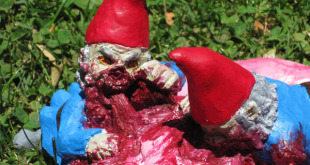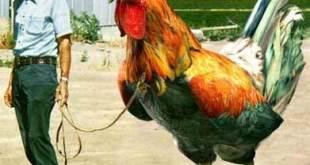Trading is a numb3rs business. I look at different ideas and systems and methods every year. I am trying to find improvements and ideas just like everyone else because there is no broad stroke to success in trading.
I have found there are essentially two ways to consistently profit in trading. You either trade a high win rate or a low win rate. When you trade a low win rate, you also need to win the lotto once or twice a month with a super large profit to offset not only the many losing trades but also the scratches and commissions as well.
The issue is you need to exit a trade only when you know it is a loser. Usually, you can’t know a trade is a loser until you have lost money. If your stop loss per trade (or average loss per losing trade) is $600 and your average profit per trade is $1,000.00, with a 40% win rate the math of your trading is as follows:
On 100 trades, $40,000 won – $36,000 lost – ($14 * 100) commission = $2,600. By the way, commission soaks up about 53.8% of your profits. This is on the high side and needs to be brought down below 30% if possible.
On a futures trading strategy, I aim for higher win rate trading because multiple opportunities arise during the day, and it takes incredible fortitude to continue trading an idea with a low win rate. Psychologically it becomes challenging to stick with a method or system that trades this way intraday and you may not be around when the winner that makes the system profitable occurs.
If your stop loss on a futures trade is $140 and your average profit per contract is $80.00, with a 70% win rate the math of your business is as follows:
On 100 contracts, $5,600 won – $4,200 lost – ($4 * 100) commission = $1000.00. Again, the commissions eat a high amount of your profits, 40% in this instance. You may think $1000 is not much to make from trading 100 futures contracts. That’s just $10 of profit per contract traded. However, if you improve your entries or exits by just three ticks on every trade your profit per contract is suddenly $20.50 and instead of making $1000 you are making $2050 and doubling your profit. What if you can improve by three ticks?
The above numbers are how I approach any method of trade. Everyone has a different preference or availability when it comes to putting risk into the stock market. If you find one that works, say swing trading, then you need to take at least 50 trades (preferably live to get the juices flowing) and run the numbers.
Now let’s run through a live example of a swing trade I have on in KNDI. With swing trades, I like to max out my position size at 20% of my book, but most often I put 10% of my risk into common stock. My idea is for losing trades to lop 1% off my book. Thus, I size my position so if the stop loss is hit, I will lose 1% of my entire risk capital. I target to make 15% profit on my swing trades. For swing trades, my stop loss is $700 and my average profit per trade is $1050, with a 70% win rate the math of swing trading is as follows:
$73,500 won – $21,000 loss – (100 * $14.00) commission = $51,100.
Below I present a chart of the KNDI trade. I draw these up to help me determine how much money should be in a trade when I enter. The second and third targets are lower probability. I scale profits on stock trades and work my risk higher along the way:
As the markets become more volatile, I adjust the proximity of stops to prevent getting knocked out of a trade due to noise. Overall, I have a 75% winrate to my first scale, 65% win rate to the second scale, and 55% win rate to my third scale. I tend to milk the winners by getting down to a runner size and becoming very liberal with my stop loss. This worked out very well the last two years, letting my winners do the work while I focus on futures and such.
Now the environment may be changing, and that is exactly what I have been coding my eyes out to discover. If we continue to see violent chop, I will be increasing position size and targeting fewer ideas with tighter stops. I simply cannot manage 15 positions while trading futures properly. However, I want to see if bulls build on this bounce like they have for the past two years. If we get a mild dip, a higher low, and then return to our pleasant decent, I will keep a large book. Developing…
If you enjoy the content at iBankCoin, please follow us on Twitter






+100. Great post and a great reminder for all of us.
thanks exbankergirl
Excellent post Raul. If you dig around a bit there are Monte Carlo simulators on the Internet. Results of various scenarios can be suprising. A freaky part is a trading strategy may work for one or two sample periods, but not over the long haul.
I will check that out for sure, thanks
Raul, thanks for this article. I still need to work out proper risk management for my system. Currently I’m just using small position sizing, but I don’t have any rules for cutting losses, yet (just trading long equities for now).
work out the numbers, it will give you more confidence
Raul – thanks for post!
de nada
i had an adjustment period where trading OA’s style of system showed the flaws in my ways. Booking a bunch of 40-60, even 80% gainers felt great at the time, but when you go thru a string of losers the net result was loss. The way I play now is the that the first 100% is ignored as I need it to protect from a 0 later on. So a 120% gain is really only a 20% in my mind.
The saying “you can’t go broke taking a profit” turns out to be false…..it can create a terrible risk/reward system and you don’t know until it’s too late.
I appreciate your sharing this information
Oh, Ratatat! I remember when I was but a young, freshman at the University of Florida, and saw Ratatat in a small lounge where the stage was but a foot off the ground. Back then, you could smoke inside, so it was a small place, with the roof collapsing and a haze of tobacco smoke. The bass and beats of the Rat definitely added to the implosion feel.
A show I will never forget.
…Am I cooler now because I knew about Ratatat before everyone else?
no, because you’re a gator. Our friendship is now divided.
FSU Alum?
yeah
yes
This wedge is about cooked with RVLT. it’s time to bust upward and just go.
needs to bust a move, back to my cost basis